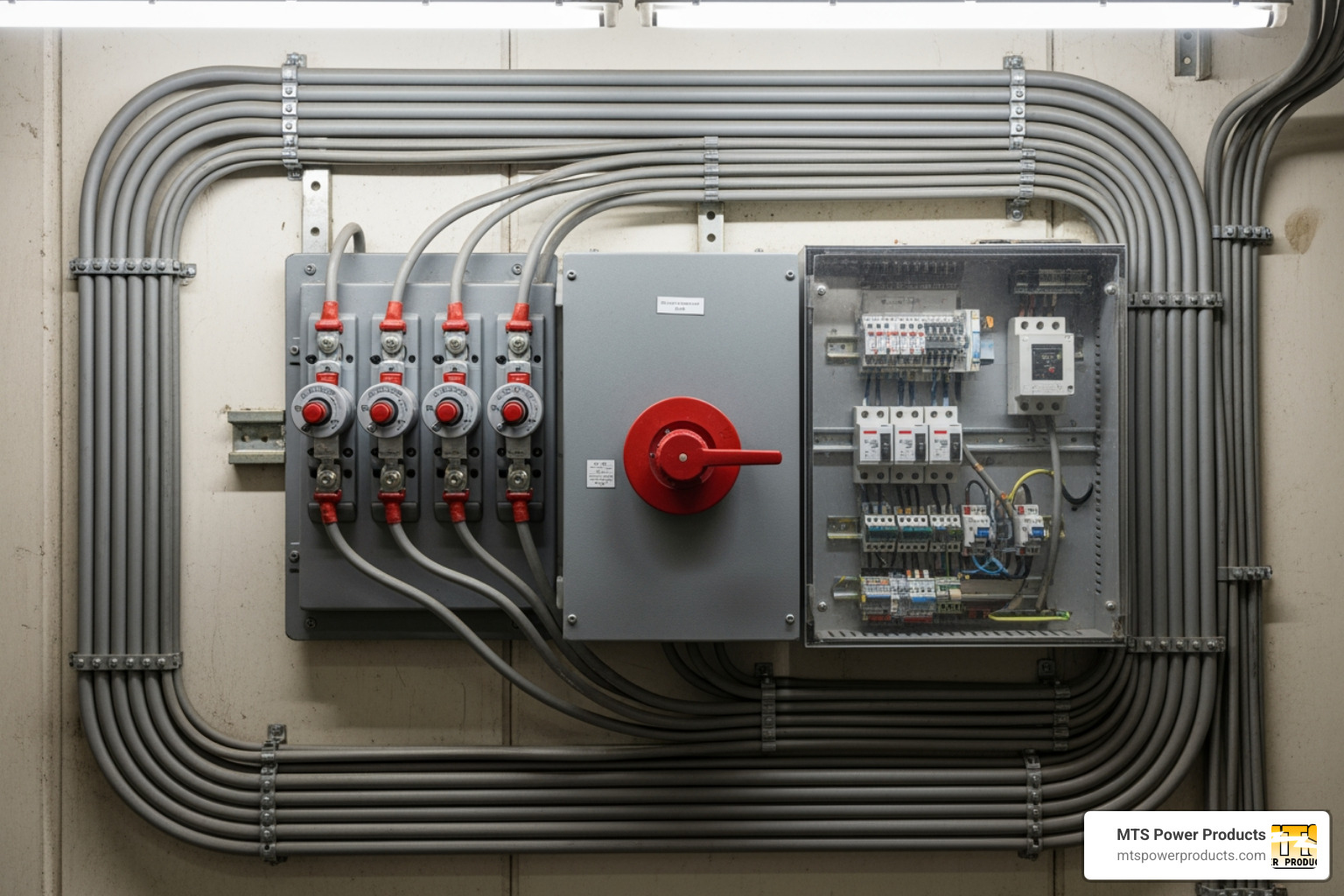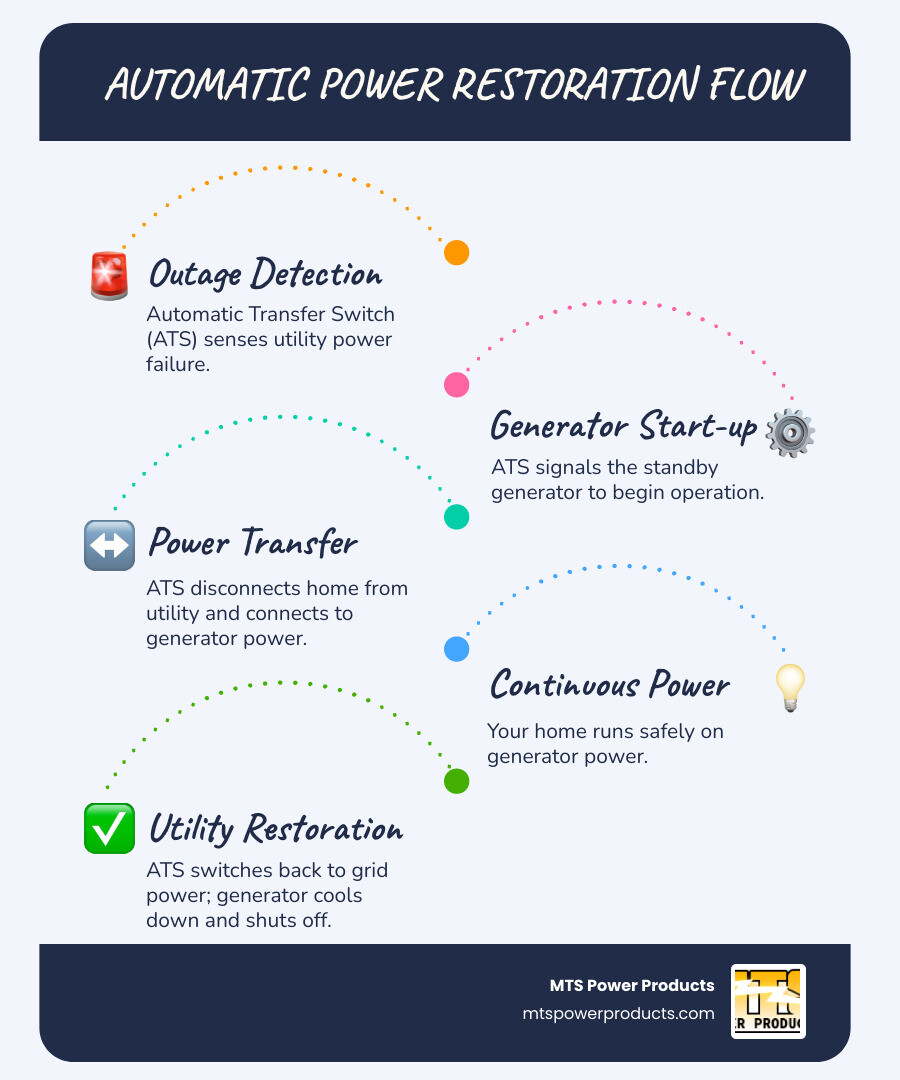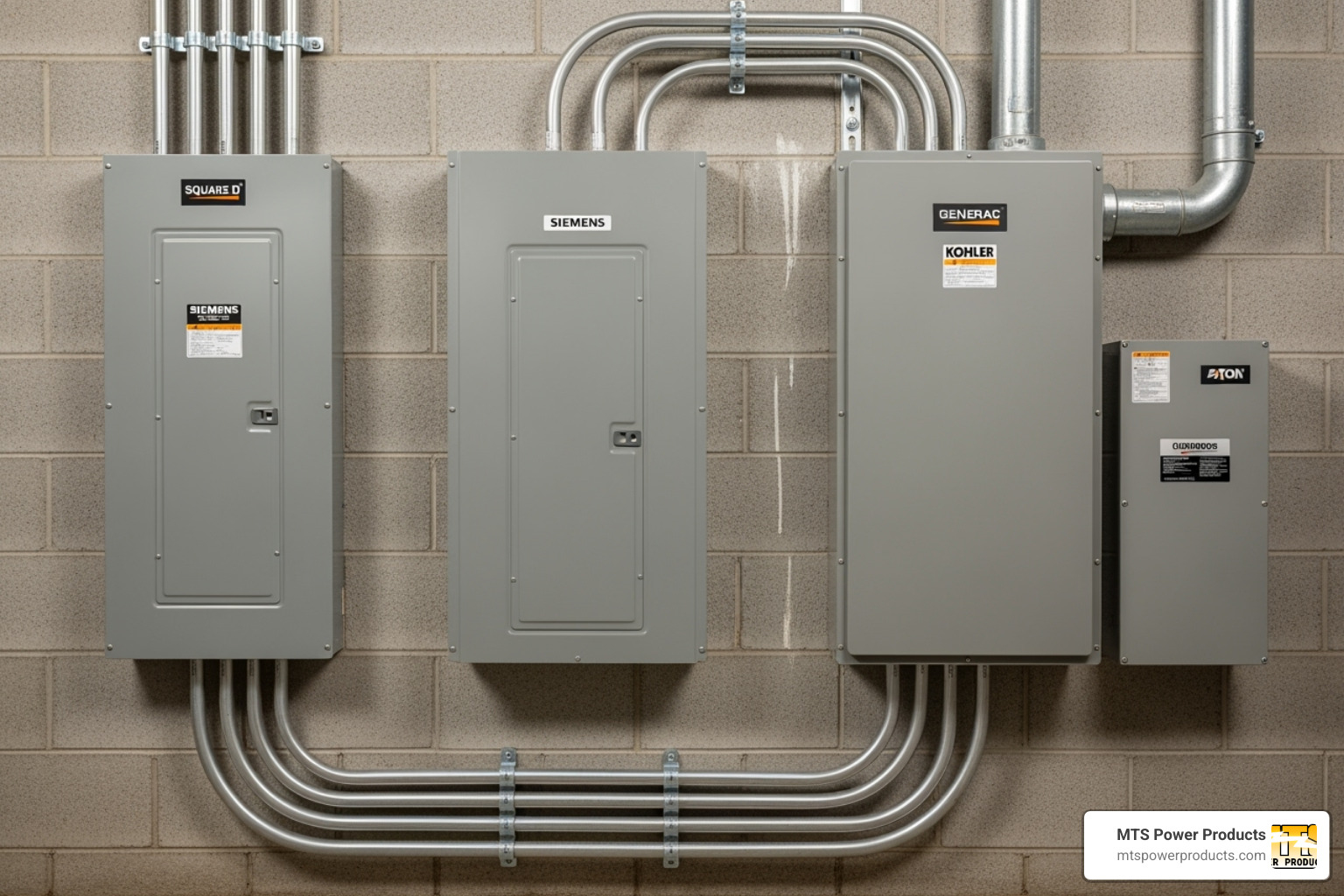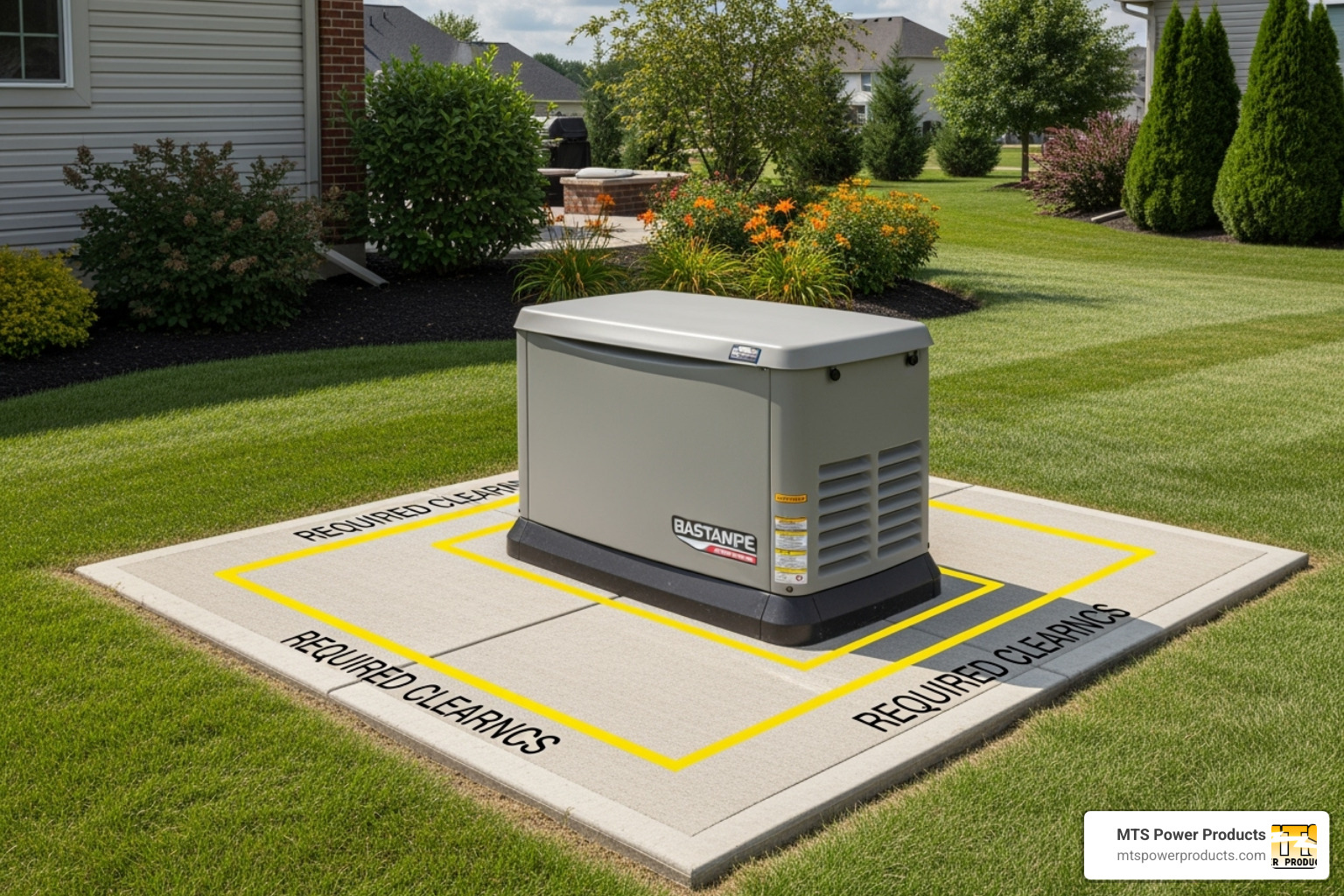
Buy Direct
from the Manufacturer
Sell our Products
Become a Distributor
Discounts
on volume purchases
Visit Us
at our Miami office
from the Manufacturer
Become a Distributor
on volume purchases
at our Miami office
A home generator with transfer switch is a safe, seamless solution for powering your home when the utility grid fails. This essential pairing keeps your family comfortable and critical appliances running, regardless of the outage duration.
Here’s how a home generator with an automatic transfer switch (ATS) works:
A reliable backup power system is an investment in peace of mind and protection for what matters most. This guide will help you understand how these systems work and choose the right one for your needs.

Home generator with transfer switch vocab to learn:
The transfer switch is the brain of your backup power system, acting as a safety-focused traffic cop for your home’s electricity. Its primary job is to safely manage whether your home draws power from the utility grid or your generator.
Connecting a generator directly to your home’s wiring is a dangerous practice called “backfeeding,” which can send electricity back onto utility lines and endanger line workers. For this reason, the National Electrical Code (NEC) mandates the use of a transfer switch. It ensures your home is connected to only one power source at a time—either the utility or the generator, but never both. To learn more, see our Generator Transfer Switch: Complete Guide.
When choosing a home generator with transfer switch, you’ll encounter two main types: Automatic (ATS) and Manual (MTS), with the choice often boiling down to convenience versus cost.
Automatic Transfer Switch (ATS): This is the ultimate hands-free solution. When power goes out, the ATS detects the outage, starts your standby generator, and automatically transfers your home to generator power. When utility power is restored, it reverses the process. This provides seamless power for critical appliances without any manual intervention. Learn more about How Automatic Transfer Switch Works.
Manual Transfer Switch (MTS): This is a more budget-friendly option that requires your involvement. During an outage, you manually start your portable generator and then flip a switch on the MTS to transfer power. MTS units are typically used with portable generators to power a few essential circuits, offering a cost-effective backup solution if you don’t mind the hands-on management.
While a panel interlock kit also prevents backfeeding, it is not a true transfer switch. An interlock is a mechanical device installed in your main panel that prevents the main breaker and generator breaker from being on simultaneously. It’s a manual, code-compliant method for use with portable generators but lacks the safety features and seamless operation of an ATS.
For a permanently installed standby generator, a UL 1008 compliant automatic transfer switch is always the recommended choice for maximum safety, convenience, and peace of mind.
Selecting the right home generator with transfer switch means matching the system to your specific power needs, fuel availability, and home layout. It’s a critical step in finding the ideal Home Standby Generator solution.
Your first decision is whether to power your entire home or only the most critical appliances.
Whole-House Coverage: This option keeps everything running, from central A/C to all lights and outlets. It requires a larger generator (typically 22kW+) and a service-entrance-rated transfer switch with an amperage that matches your home’s main panel (e.g., a 200A panel needs a 200A switch).
Essential-Circuits Coverage: This more targeted approach powers only critical items like the refrigerator, sump pump, and a few lights. It uses a smaller generator and a load-center transfer switch (e.g., 100A) that connects to a pre-selected number of circuits. This is often a more cost-effective solution.
To size your generator, perform a load calculation by adding the starting (surge) and running wattage of all appliances you want to power. Motor-driven appliances have high starting wattages that dictate the minimum generator size. For example, a 14kW unit might handle essentials plus a small A/C, while a 22kW-26kW unit can often manage an entire home.
The fuel type impacts convenience, cost, and runtime.
Before installation, a qualified technician must confirm your gas meter (for NG) or propane tank regulator can support the generator’s BTU demand in addition to your other gas appliances.

Many manufacturers offer bundled packages for a home generator with transfer switch. To help you understand what’s available, we’ve compiled a table of common models on the market. This provides a general overview of different power levels and features. Prices are approximate and can vary based on location and installation specifics.
| Model Example | kW (LP/NG) | Switch Amps | Fuel Type | Key Feature | Approx. Price |
|---|---|---|---|---|---|
| Generac 10kW Guardian with 100A Switch | 10/9 | 100A | NG/LP | Compact, essential circuit backup | $3,400 |
| Champion 12.5kW Standby with 100A Switch | 12.5/11.25 | 100A | NG/LP | Powers 14-circuit essential loads | $3,900 |
| Briggs & Stratton 16kW with 100A Switch | 16/15 | 100A | NG/LP | Manages up to two A/C units, flexible placement | $4,900 |
| Generac 22kW Guardian with 200A Switch | 22/19.5 | 200A | NG/LP | Whole-house power, Wi-Fi enabled | $6,300 |
| Generac 26kW Guardian with 200A Switch | 26/24 | 200A | NG/LP | High air-cooled output for whole-house power | $7,100 |
| KOHLER 26kW with 200A Switch | 26/24 | 200A | NG/LP | Robust build for whole-house power | $7,200 |
For homeowners looking to power essential circuits, generators in the 10kW to 16kW range offer a balance of capability and cost. These systems can typically handle refrigerators, sump pumps, furnaces, and some lighting.
Models like the Generac 10kW Guardian provide an entry point into automatic standby power. For slightly more capacity, the Champion 12.5kW unit can power additional circuits. A model like the Briggs & Stratton 16kW Home Generator offers more power and features like a front-exhaust design, allowing for installation closer to the home (18 inches), which is useful for properties with limited space.
For those who want to maintain a normal lifestyle during an outage, whole-house systems in the 22kW to 26kW range are a popular choice. These can power multiple central A/C units, electric appliances, and all household lighting.
The Generac 22kW Guardian with 200A Whole-House Switch is a widely available package that includes Wi-Fi for remote monitoring. Its True Power™ Technology provides clean electricity (low harmonic distortion), which is safer for sensitive electronics.
For homes with very high electrical demands, units like the Generac 26kW Guardian or the KOHLER 26kW offer the highest output in the air-cooled class. They are designed to handle large loads, including multiple air conditioners and pool equipment, ensuring comprehensive backup power.
For those who prefer a non-permanent or more budget-conscious solution, a powerful portable generator paired with a manual transfer switch is a viable option. The Westinghouse WGen20000TFc, for example, offers high wattage and tri-fuel capability (gasoline, propane, natural gas), providing fuel flexibility during extended outages.
Pairing such a generator with a Generac HomeLink Manual Transfer Switch creates a safe, code-compliant backup system for 8-10 essential circuits. These switches use a standard L14-30 inlet for easy connection and can sometimes be upgraded to work with a standby generator later, offering a future-proof path.
Investing in a home generator with transfer switch involves more than the initial purchase. Understanding the installation process, total costs, and ongoing maintenance is key to ensuring your system provides reliable power for years.

Professional installation is essential for safety and code compliance, as it involves complex electrical and gas line work. The process generally follows these steps:
The entire process can take several weeks to a few months, depending on permits and scheduling. It’s best to plan well before storm season.
The total cost includes more than just the equipment. Here’s a typical breakdown:
Overall, a professionally installed standby generator system can range from $7,000 to over $15,000.
Like a car, your generator requires regular maintenance to ensure it’s ready when needed.
Modern home generator with transfer switch systems include sophisticated features that improve reliability, control, and safety. These advancements align with MTS Power Products’ focus on professional-quality equipment, such as our McPherson Controls line, which integrates programmable displays and advanced switch mechanisms for superior control.
Today’s generators offer advanced connectivity and power protection.
The physical design of a generator impacts its longevity and neighborhood friendliness.
Your backup power system should be ready for the future.
When the power goes out, a home generator with transfer switch is your lifeline to safety, comfort, and normalcy. This investment provides invaluable peace of mind, ensuring your home remains powered during any outage.
This guide has covered the essentials of choosing the right system: understanding the critical safety role of the transfer switch, sizing the generator for your needs, and selecting the right fuel type. While the installation is complex, professional guidance makes it a straightforward process, and regular maintenance ensures long-term reliability.
At MTS Power Products, we know every home’s power needs are unique. Based in Miami, Florida, we are passionate about providing professional-quality solutions that perform when it matters most. As a direct manufacturer of generator sets, transfer switches, and our own McPherson Controls line, we offer custom solutions with advanced safety and control features that set us apart.
Whether you need an essential-circuit system or a comprehensive whole-house solution, our team has the expertise to guide you. We are centrally located near Miami’s airport and port, enabling us to serve customers worldwide with a personal touch.
Ready to secure your home’s power? Explore our complete range of generator automatic transfer switches and find why MTS Power Products is the premier choice in South Florida for custom generators and backup power solutions.
